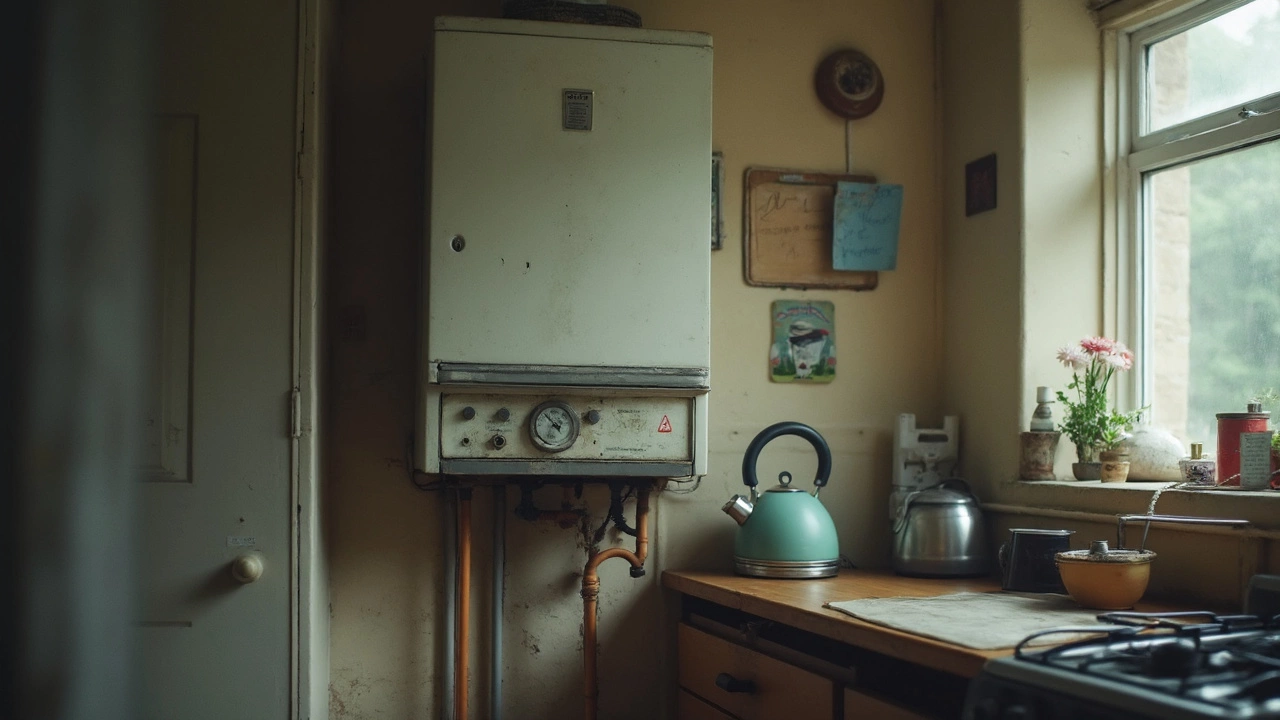40 Year Old Boiler – Is It Time to Replace?
If your boiler has been around for four decades, you’re probably wondering whether it can still keep your home comfortable. Boilers that old often show wear that regular servicing can’t hide. In this guide we’ll show you the key signs that your 40 year old boiler is past its prime, what repair options exist, and how to choose a replacement that saves money and energy.
Spotting the Warning Signs
First, listen for unusual noises. Rattling, knocking, or a high‑pitched whine usually means parts are loosening or corroding. Next, check the heating output. If rooms stay chilly even when the thermostat is set high, the heat exchanger may be failing.
Look at the boiler’s age on the rating plate – it will say something like “manufactured 1985”. If it’s 40 years old, corrosion is likely inside the metal. Leaking water, rust stains on the pipework, or a constantly running pressure gauge are all red flags.
Finally, think about your energy bills. Older boilers are far less efficient than modern models. A sudden jump in heating costs often points to a loss of efficiency that no amount of cleaning can fix.
Repair vs. Replace – What Makes Sense?
Repairing a 40 year old boiler can be tempting if the problem looks small. Replacing a burnt‑out pump or a faulty thermostat usually costs a few hundred pounds. However, each repair adds to the total cost and often only delays the inevitable.
When the heat exchanger is cracked, the boiler can leak carbon monoxide – a serious safety issue. No repair can guarantee safety if the core structure is compromised. In that case, a replacement is the only responsible choice.Cost comparison helps a lot. A typical repair on an old boiler runs £150‑£300, while a new, high‑efficiency model costs £2,000‑£3,500 including installation. If you’ve already spent more than a third of the price of a new unit on fixes, it’s time to switch.
Modern boilers run at 90‑95% efficiency, which can shave 15‑30% off your heating bills. Over a ten‑year period the savings often cover the upfront price, especially if you qualify for government grants or energy‑efficiency loans.
Safety should be your top priority. A 40 year old boiler is less likely to meet today’s Gas Safe standards. Even if it still works, the risk of a carbon‑monoxide leak or a sudden breakdown in winter is high. A replacement gives you peace of mind and a warranty that covers parts and labor.
In short, small fixes are okay if the boiler is otherwise solid and your bills are stable. As soon as you see signs of corrosion, repeated failures, or a spike in heating costs, start planning for a new unit.
When you decide to replace, choose a certified installer, ask about the Seasonal Efficiency Ratio (SER), and look for a model that matches your home’s size. A professional can perform a heat‑loss calculation to ensure you don’t overspend on a boiler that’s too big.
Keeping up with regular servicing even after a replacement helps you avoid the same pitfalls down the road. Schedule a boiler service at least once a year, check the pressure gauge, and keep the area around the unit clear of clutter.
Whether you end up repairing a few parts or installing a brand‑new boiler, the goal is the same: a warm home, low bills, and no safety surprises. Take the signs seriously, weigh the costs, and make a decision that keeps you comfortable for years to come.
